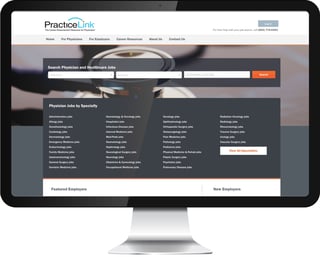 No matter how well-planned a message is, miscommunication could always be imminent.
No matter how well-planned a message is, miscommunication could always be imminent.
When Elton John recorded “Tiny Dancer,” he didn’t expect listeners to hear, “Hold me closer, Tony Danza.” According to Toto’s “Africa,” “there’s nothing that a hundred men or more” – not on Mars – “could ever do.”
Miscommunications can happen in all types of exchanges: a text message to a friend, an email from a co-worker, even a phone interview with a candidate. They usually result in follow-up questions that only take a few seconds to clear up, but make no mistake: Depending on the timing, frequency and size, miscommunications can cause frustration, break conversations and even damage relationships.
To help your messages remain clear, try these six tips in your communications with candidates:
- Consider the best communication method.
A good rule of thumb in communication is the more senses that can be involved, the less chance for a misunderstanding. With face-to-face meetings, you can hear others’ responses and tone, see their body language and gain an overall feeling from the conversation. Phone calls retain the ability to hear tone but eliminate the opportunity to pick up on body language. And email is limited to nonverbal communication that can potentially be misinterpreted.
When deciding on the appropriate communication method, start by asking your candidate whether they have a preference.
You should also consider the information being shared and the level of urgency. Confirming minor details or providing updates can likely be handled via email, while a phone call is likely better for time-sensitive issues and topics likely to elicit questions.
Some instances might warrant multiple communication points. For example, if you’re presenting a letter of intent or job offer, you might use email to share a document and schedule a call to formally review.
- Eliminate errors.
“It’s better to measure twice and cut once.”
While the adage applies specifically to carpentry, it holds true in communication. It’s better to take a little extra time to ensure a message is accurate instead of speedily communicating something, only to spend more time and energy clarifying details later.
- Know your communication tendencies.
A message may carry the best intentions, but the recipient could still misinterpret it based on word choice, tact or diction. When preparing your communications, review for unintended emotions or meanings that may have been included inadvertently.
- Avoid assumptions.
Institutional knowledge is the experiences, statistics, procedures, terminology and other information gained by being with a group for a long period of time. The longer you’ve been in an industry, organization or role, the more institutional knowledge you’ve acquired. It’s great for your ability to communicate with others in the same group, but it can be a barrier when communicating with people outside of it.
To overcome this barrier, spell out details figuratively and literally:
- Figuratively – Be clear and concise in any instructions. Leave as little open to interpretation as possible.
- Literally – Consider phrases, terminology and acronyms you use often. If the person with whom you’re communicating isn’t familiar with your organization, will they understand what everything means?
- Practice active listening.
When having a conversation or reading an email, avoid the urge to multitask. Give the person or message your undivided attention. Focus on the information being shared and any questions being asked. When in person, this includes picking up on body language.
Active listening helps you comprehend their message and – when you don’t understand or something sounds off — it helps you identify the necessary follow-up questions to fully grasp what’s being communicated.
- Anticipate questions.
When planning a communication, try to think about what questions may follow. This proactive thinking can help reduce the amount of back and forth. It also gives you time to think through and research answers, allowing you to deliver them more confidently.
We’re here to help!
Contact ProTeam@PracticeLink.com to discuss more solutions for your physician recruitment needs.








